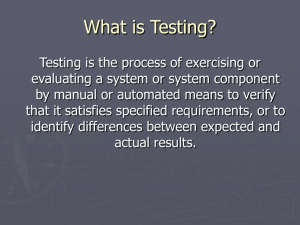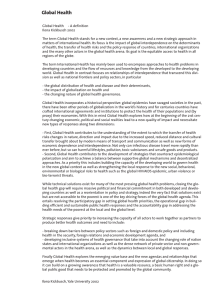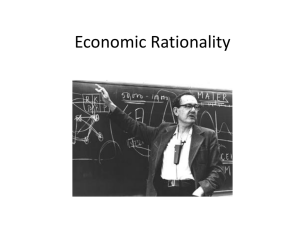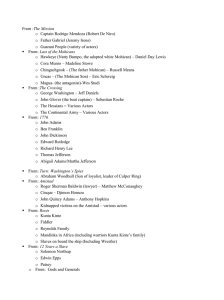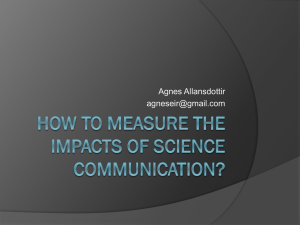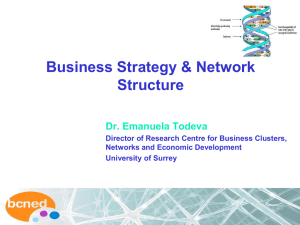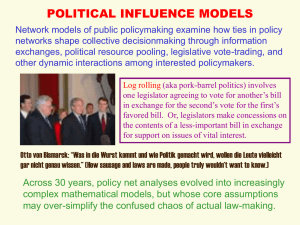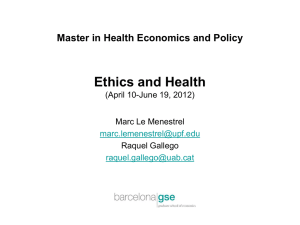Small state studies Introduction
advertisement
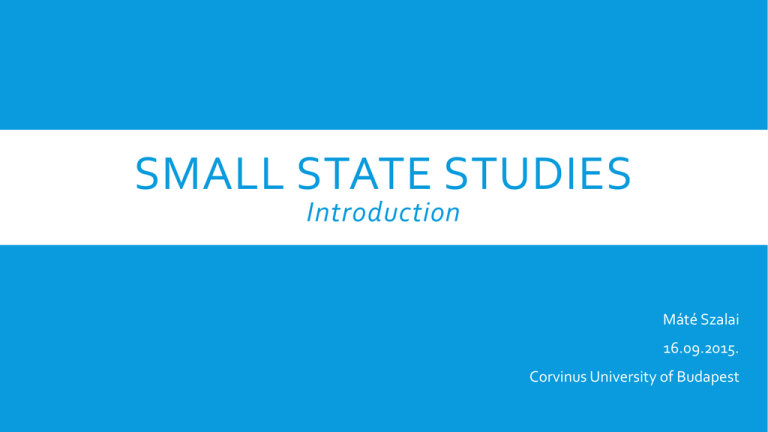
SMALL STATE STUDIES Introduction Máté Szalai 16.09.2015. Corvinus University of Budapest 1. Why should we study small states? 2. How have small states been studied? 3. How are we going to study small states? SMALL STATES HAVE BEEN NEGLECTED BY IR 1. According to „common sense”, actors having only limited resources are powerless in International Relations 2. Studying international relations has been a privilege of great states - research bias HOW DO WE CHOOSE THE ACTORS WE WANT TO ANALYZE? Problem Who? Relevant Actors How? Interests and behavior DOMINANT PRESUMPTIONS OF IR How can we measure the relative power of actors? Actors actually have a given power Power can be measured The power of the actors can be compared How do powerful actors shape international politics? International politics are being shaped We can distingiush between powerful and other types of actors WHAT ARE THE MAIN INDICATORS OF POWER? "The nature and significance of the „facts” are determined to a substantial degree by the (…) purposes of those who select them (...). It is the purposes that guide the selection of data, that give them relevance and meaning." 1. SO WHY SHOULD WE STUDY SMALL STATES? 1. International relations are not being shaped exclusively by „powerful” actor. 2. The majority of states are small – if we refuse to deal with them, we actually refuse to deal with a huge part of reality 3. The power of great states is being limited by international law, norms and identity 4. Globalization and technical development creates huge possibilities for small states 5. We are actually in a small state 6. Studying small states provides as a good opportunity to basically question everything we know about international relations 2. HOW HAVE SMALL STATES BEEN STUDIED? 1. 2. 3. •Before 1945 Total neglect •1945-1990 Peak and decline •1990- Revival 1950s: first publications Systematic weakness Diplomatic skills, geopolitics 1960s-1975: Climax Systematic weakness Economic and political dependence 1975-1990: Standstill The notion of the small state does not provide a useful analyticial framework THE REBORN OF SMALL STATE STUDIES 1990s and 2000s Why? The dissolution of Yugoslavia, Czechoslovakia, the USSR, etc. Globalization Theoretical advancement in IR New starting point: smallness does not necessarily mean weakness STARTING POINTS AND ANALYTICAL ASPECTS Capabilities Institutions Small States Relations 3. HOW ARE WE GOING TO STUDY SMALL STATES? I. Introduction to Small State Studies 1. 2. 3. 4. Introduction to the course Constructing Power and Security in the International System Defining Small States The Determinants of Small State Foreign Policy II. Theory of Small State Foreign Policy 5. (Neo)realist tradition and its critiques 6. Neoliberal tradition 7. Alternative theories: Marxism, Virtual Enlargement, Norm Entrepreneurship 8. Alternative theories: constructivism, learning III. Case Studies from all around the world 10. Small States in the European Union 11. Small States of the Middle East and Asia 12. Microstates 13-14.: Small States in Africa, Latin America and the Pacific REQUIREMENTS 1. Active participation in the class 2. Holding a presentation about a specific small state / submit a paper of 10 pages 3. Oral exam THANKYOU FORYOUR ATTENTION


